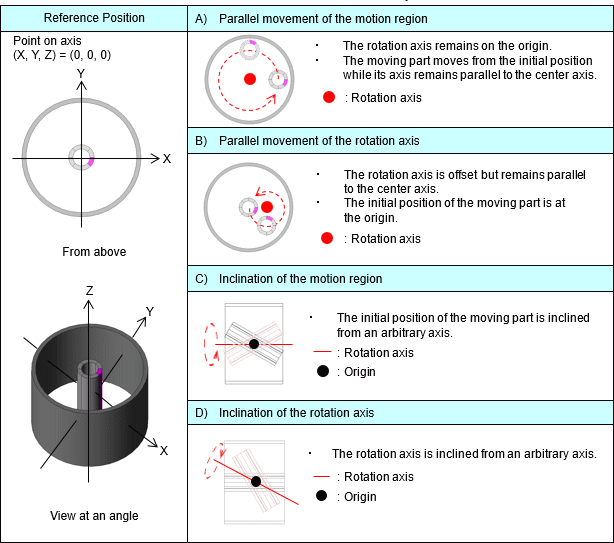Overview
In rotating machines, deviations may occur from the rotation axis or the center axis of the model during manufacturing or driving. An eccentricity function is useful for forecasting behavior and confirming behavior during driving.
JMAG-Designer has an eccentricity function in the [Motion: Rotation] condition. It is not necessary to create a geometry that takes in account the eccentricity in advance. The movement of the motion region where its axis (the central axis when there are no deviations or inclinations) remains parallel to but offset from the rotation axis which coincides with the central axis (A in Table a), where the rotation axis remains parallel but offset from the central axis and where the motion region axis coincides with the central axis initially (B in Table a), where there is an inclination of the motion region axis from the rotation axis which coincides with the central axis (C in Table a), and where there is an inclination of the motion region axis from the rotation axis and where the motion region axis coincides with the central axis initially (D in Table a), are shown be in Table a.
This document shows how to set the eccentricity to account for the moving part’s axis remaining parallel to the central axis while moving from the initial position and afterwards (A in Table a).
Table a Basic motions of eccentricity

Key words
rotating machine, motor, gear, bearing, eccentricity, motion region


